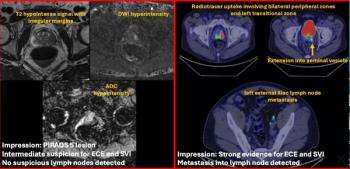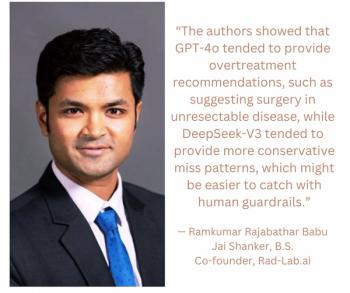
PACS simulator shows how system components work together
Radiologists and trainees may be able to figure out basic workstation functions, but do they really grasp the big picture when it comes to PACS? Probably not -- but a system exhibited at RSNA's InfoRAD may offer a solution. Designed by longtime PACS
Radiologists and trainees may be able to figure out basic workstation functions, but do they really grasp the big picture when it comes to PACS? Probably not - but a system exhibited at RSNA's InfoRAD may offer a solution.
Designed by longtime PACS developer Dr. Bernie Huang, the PACS simulator can be added to a PACS to provide instruction in functions and flow. The system also allows users to disable components and see the outcome.
Huang, who directs informatics programs at the University of Southern California and The Hong Kong Polytechnic University, said he developed the instructional approach after running workshops for radiologists and realizing that they lacked an overview of the PACS process. They could not visualize what different PACS components do or what would happen if a given component failed, he said.
The main audience for the educational RIS/PACS simulator consists of technologists, PACS administrators, and hospital information technologists who need a good overall command of the PACS operation, Huang said. Training for radiologists would be appropriate if they need a more comprehensive view of the PACS image management process.
The training system software has been operated at a facility in Hong Kong for a year and will soon be installed at one in Taiwan. Although the package is not commercially marketed, Huang said he would make the software available at no charge to educational institutions.
The PACS simulator consists of five key components that simulate a typical clinical PACS: an acquisition modality simulator, DICOM gateway, PACS server, and two clinical viewing workstations. A RIS simulator includes functions for registering patients, forwarding the worklist to the modality simulator, and routing the report to storage.
Together, the PACS and RIS software simulate normal clinical data flow and provide users with hands-on training they may not otherwise receive. Beyond just seeing how a PACS works, the simulator can provide instruction in troubleshooting and basic PACS administration, said Dey Partha, a USC engineering student who helped demonstrate the simulator.
Newsletter
Stay at the forefront of radiology with the Diagnostic Imaging newsletter, delivering the latest news, clinical insights, and imaging advancements for today’s radiologists.




























